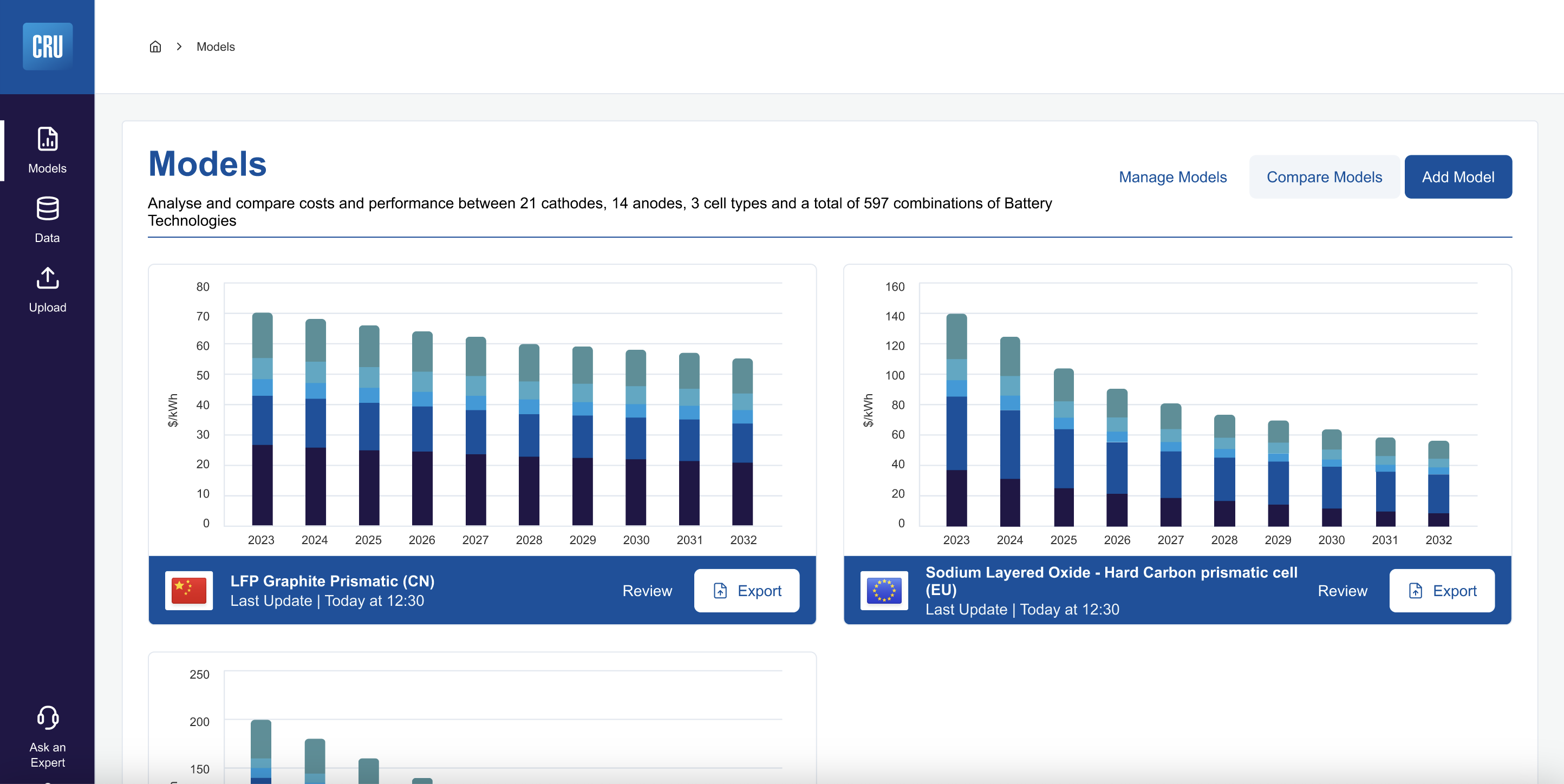Battery Cost Model
Sectors
Green Energy, Battery Storage
Technologies
Microsoft Azure, React, Next.JS, Node.JS, Terraform Cloud
Country
United Kingdom
Executive Summary
The Battery Cost Model was created to meet the growing demand for accurate battery cost analysis. The main goal was to develop a digital service that would enable analysts to make tactical and strategic choices based on the fluctuating costs of battery technologies. The project’s results, implementation procedure, and methodology are described in the following case study.
Challenge
The green energy market is rapidly expanding. More and more focus is being placed on batteries, their overall performance and costs. Accurate battery models are essential for stakeholders to make informed decisions. However, existing solutions were either too simplistic, lacking in detail, or overly complex, making them difficult to use. At Exlabs, our challenge was to develop a comprehensive, user-friendly application that could deliver detailed information and forecasts based on the provided calculation model API.

Solution
To address this challenge, we adopted the following strategies:
1. User-centric approach – from the beginning, we engaged with end-users and model analysts to understand their needs and problematic areas
2. Simple, reliable architecture – we developed architecture focused on maintainability, which allowed us to speed up the time-to-market
3. Agile approach – we worked with Agile practices to bring flexibility and embrace the changes resulting from customer feedback
4. Quality assurance – from the beginning of the process, we incorporated Quality Assurance engineers who performed rigorous testing. Our goal was to deliver a high-quality solution – we achieved this by maintaining test coverage at an 80% level, along with performing regression testing
5. Cross-functional team – by bringing together a diverse set of skills and expertise, we created a team that delivered a high-quality, user-friendly, and reliable solution
Implementation
The project implementation involved several key steps:
1. Requirement Gathering – at the beginning, we conducted workshops and interviews with stakeholders and system analytics to gather detailed requirements necessary to create a transparent backlog
2. Choosing the right stack – we selected a technology stack that included modern, widely-supported languages and frameworks – Node.js, Next.js, React
3. Development phase and testing loop – during the development process we carried out extensive tests to ensure the model’s accuracy and usability
5. Deployment -the solution was deployed in phases by using GitHub Actions on Terraform Cloud. This allowed final user acceptance testing followed by a launch
Outcomes
The Battery Cost Model Project yielded significant positive outcomes:
- – Quick time-to-market – the approach that we have taken allowed us to deliver the application in a 3-month time-frame
- Accuracy and reliability – users’ tests reported high satisfaction with the accuracy, reliability and overall platform experience
– Enhanced decision-making – customers can now make more informed decisions, resulting in better investment strategies and cost management in the green energy sector
– Scalability and flexibility – the application design enables scalability and easy updates, ensuring the model remains relevant as battery technology evolves over time.
The successful implementation of the Battery Cost Model demonstrates our capability to deliver high-quality, user-friendly solutions that meet the complex needs of the Green Energy sector while ensuring a rapid time-to-market implementation.